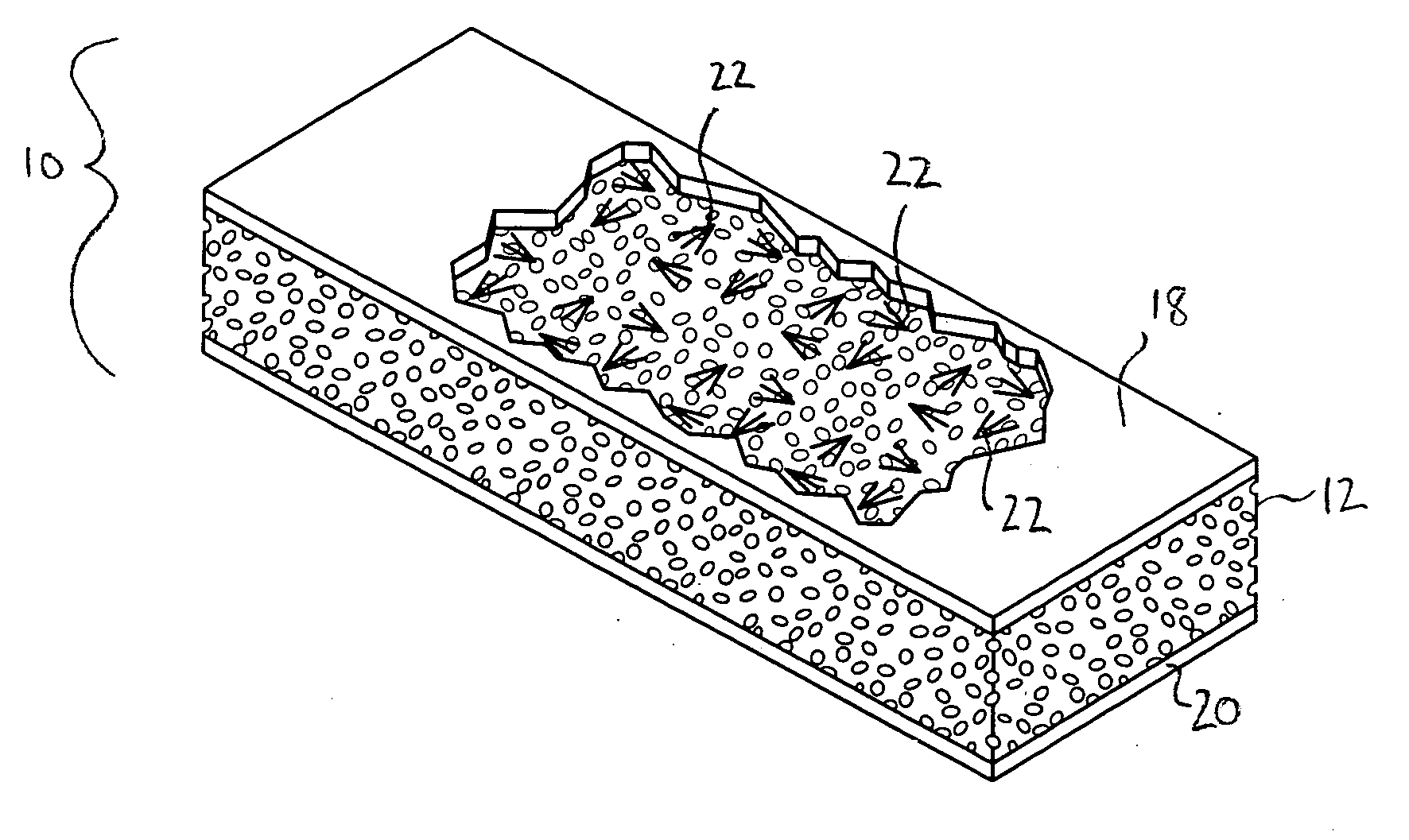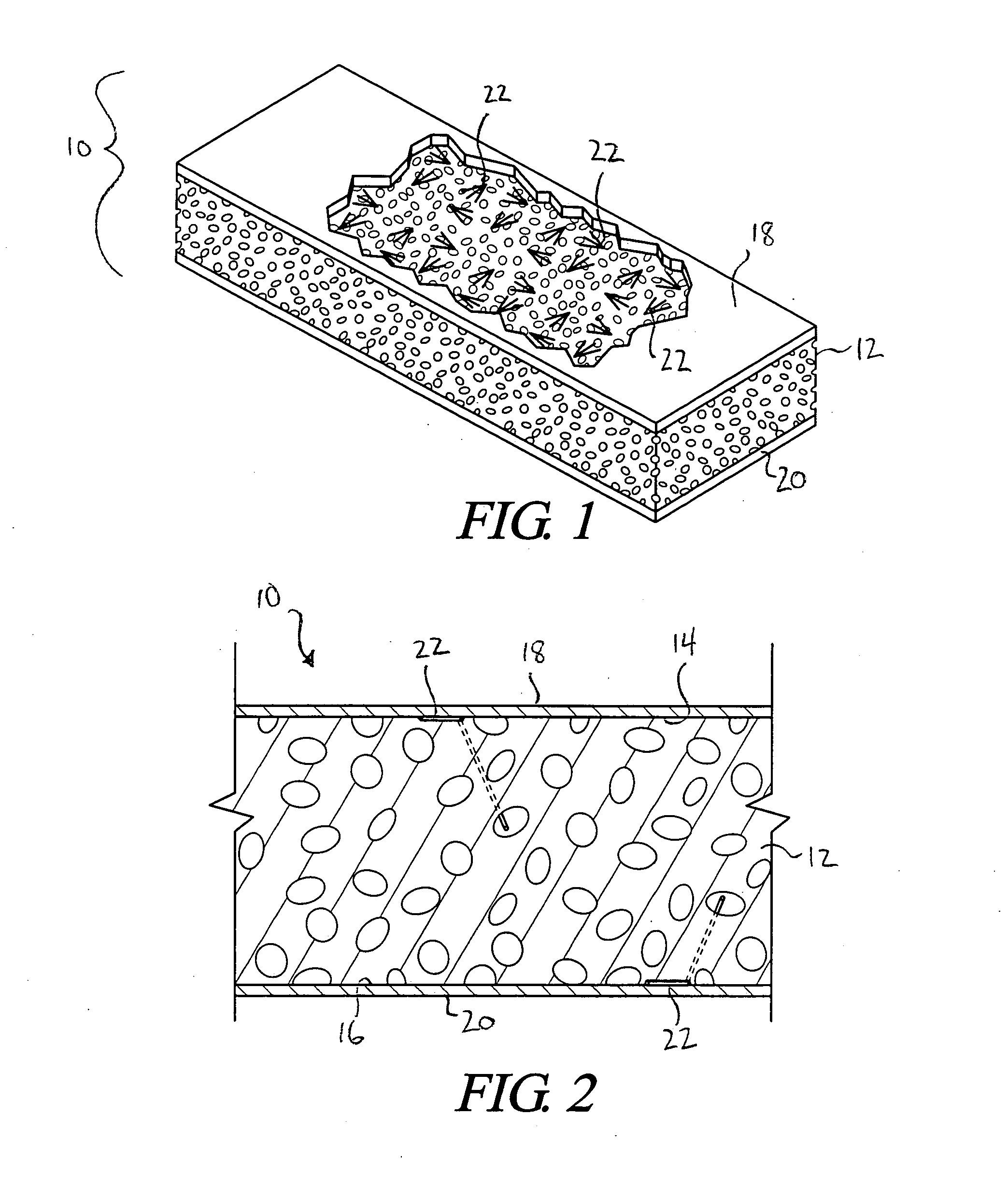Laminated carbon foam sandwich for naval decking
a technology of laminated carbon foam and naval decking, which is applied in the direction of ceramicware, vessel construction, hull parts, etc., can solve the problems of high cost, heat and vibration transmission of metal decking, and the use of specialized dampeners and other materials,
- Summary
- Abstract
- Description
- Claims
- Application Information
AI Technical Summary
Benefits of technology
Problems solved by technology
Method used
Image
Examples
example
[0057] A rectangular phenolic foam block with dimensions of 7.8 inches long, 3.9 inches wide and 2.9 inches thick is converted to carbon foam in the following manner. The starting phenolic foam has a density of 0.32 g / cc, and a compressive strength of about 300 psi. The foam is packed in a steel can, protected from air and then heated at 2° C. per hour to a temperature of 550° C. and then at 10° C. per hour to 900° C. and held for about 20 hours at that temperature. The resultant carbon foam obtained has a density of 0.336 g / cc and a compressive strength of 4206 psi, for a strength to density ratio of 12,517 psi / gm / cc. The thermal conductivity of the foam is measured as 0.3 W / m° K. at 25° C. and the permeability is measured as 0.17 darcys.
[0058] The foam was examined by optical microscopy and the porosity of the foam is measured as 79.5%. Two sets of pores are observed, and the pores appear round with fairly uniform diameters. An image analysis procedure is used to determine the av...
PUM
| Property | Measurement | Unit |
|---|---|---|
| diameter | aaaaa | aaaaa |
| diameter | aaaaa | aaaaa |
| compressive strength | aaaaa | aaaaa |
Abstract
Description
Claims
Application Information
 Login to View More
Login to View More - R&D
- Intellectual Property
- Life Sciences
- Materials
- Tech Scout
- Unparalleled Data Quality
- Higher Quality Content
- 60% Fewer Hallucinations
Browse by: Latest US Patents, China's latest patents, Technical Efficacy Thesaurus, Application Domain, Technology Topic, Popular Technical Reports.
© 2025 PatSnap. All rights reserved.Legal|Privacy policy|Modern Slavery Act Transparency Statement|Sitemap|About US| Contact US: help@patsnap.com


